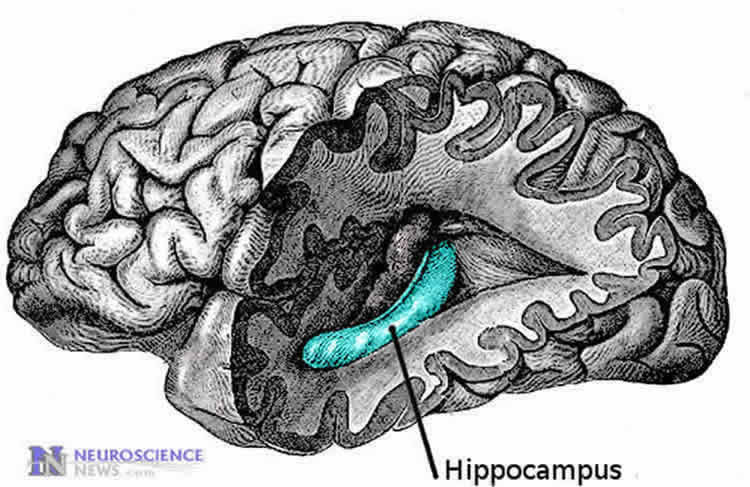Summary: Researchers report episodic memory develops in distinct stages during postnatal maturation.
Source: AAAS.
By observing how newborn rats first navigate and begin to remember the environments they are born into, researchers have gained new insight into how brains develop the ability to turn experiences into memory. According to the new study, episodic-memory develops in distinct stages during postnatal maturation in rats.
The hippocampus, a tiny lobe of gray matter located in the center of the brain, is critical in turning the events of our day-to-day lives into memories. Experiences are replayed in the brain as time-compressed neuronal sequences during sleep or rest, which encode and consolidate repeated encounters and environments into recallable memory episodes.
Previous research has suggested that the hippocampus’ ability to rapidly encode memories is aided by a selection of pre-configured neuronal patterns, which integrate many different types of information from across the nervous system. However, due to the challenges of adequately recording the activity of neurons in freely-behaving infant animals, when and how these crucial neural ensembles emerge remain unknown.
To uncover the development of episodic memory, Usman Farooq and George Dragoi began recording the neural activity of newborn rats as soon as they opened their eyes and began exploring their environment – in this case, a one-meter long linear track – both before and after rest and sleep sessions.

Through their experiments, Farooq and Dragoi identified three age-dependent and distinct stages in the development of neuronal ensembles. By the second week of life, the rat brain can represent discrete locations. However, the brain cannot bind these representations to time-compressed sequences during sleep, which is required to encode them as memories, until the rats are at least three weeks old.
The authors suggest that the formation of these neuronal sequences begins spontaneously during sleep and is likely controlled by signals sent from other areas of the developing brain. By four weeks, the rats exhibited adult-like episodic-like memory functioning.
Source: AAAS
Publisher: Organized by NeuroscienceNews.com.
Image Source: NeuroscienceNews.com image is in the public domain.
Original Research: The study will appear in Science.
[cbtabs][cbtab title=”MLA”]AAAS “Early Development of Memory for Space and Time.” NeuroscienceNews. NeuroscienceNews, 10 January 2019.
<https://neurosciencenews.com/space-time-memory-10496/>.[/cbtab][cbtab title=”APA”]AAAS(2019, January 10). Early Development of Memory for Space and Time. NeuroscienceNews. Retrieved January 10, 2019 from https://neurosciencenews.com/space-time-memory-10496/[/cbtab][cbtab title=”Chicago”]AAAS “Early Development of Memory for Space and Time.” https://neurosciencenews.com/space-time-memory-10496/ (accessed January 10, 2019).[/cbtab][/cbtabs]






